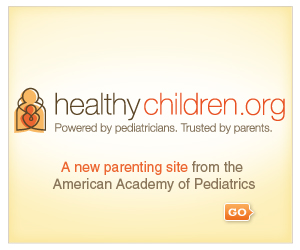What are ear infections, anyway?
For starters, you need a quick anatomy lesson. Don’t stop reading, it won’t be as boring as junior high life science class!
There are 3 parts to the ear:
The inner, middle, and outer areas (that’s the part you can see). Your eardrum is a little piece of tissue that separates the middle and outer ear area. The middle part of the ear attaches to a tube (the Eustachian tube), which then hooks up to the back of the throat. The Eustachian tube has an important job: to equalize pressure changes in the ear and clear out fluid due to an infection or allergies. Babies are born with Eustachian tubes that lie horizontally. The tubes eventually begin to slant downwards as their faces and heads grow and elongate (by age 3). So, as you can imagine, kids under age 3 have Eustachian tubes that are less effective in draining fluid than an older child or an adult.
Now that you know all the key players…a “middle ear infection” is basically germs and pus behind the eardrum. The pus puts a lot of pressure on that tiny eardrum tissue, and that’s why it hurts like the dickens to have an ear infection! Occasionally, the eardrum will actually break or pop to relieve the pressure…and then you see the pus and blood draining out of the ear. (Don’t worry, the eardrum is very resilient and heals back up.)
Every time a young child gets a cold or the flu, his body needs to drain the nasal secretions. And, because his Eustachian tubes don’t work that effectively, that pool of secretions make a nice breeding ground for either bacteria (90% of the time) or the viral infection causing the cold, which leads to pus (a.k.a. the ear infection).
While every ear infection doesn’t need to be treated with antibiotics (some will clear on their own), most kids under age two get antibiotics because they have a higher risk of having complications from those ear infections and are less likely to clear on their own.
So, back to the question at hand…how many ear infections are too many? Here’s what I suggest:
- Four infections in peak cold and flu season (winter=October through April)
- Three infections in non-peak season (summer)
- Three months of persistent residual fluid behind the eardrum
- Three back to back courses of antibiotics for the same ear infection
If your child fits into one of these categories, ask your healthcare provider about a specialist referral.
These are the reasons why I am pro-active about referring a child to an ear, nose, and throat specialist for a potential surgical procedure to eliminate/reduce the number of ear infections:
- Antibiotics are not risk-free or cost-free. They can cause diarrhea, ear infections, and potential allergic reactions. They also cost parents a co-payment at the doctor’s office and at the pharmacy (as well as missed work days)!
- Temporarily impaired hearing. Our ears require air to be behind the eardrum to resonate sound waves. Every time your child has pus or fluid (the remains of the pus which can take several weeks to clear after the infection), sounds and voices are muffled. Since most ear infections occur while a child is trying to learn how to talk and communicate (0-3 years of age), this is a significant issue.
- Ear infections hurt! Any adult who has had an ear infection can commiserate with the agony of an earache. It’s hard for anyone (the patient or the parent) to sleep through the night when a child has an earache.
- PE tubes work. Many parents dread the thought of having their child undergo a surgical procedure. But the truth is, making a small opening in the eardrum and putting a tiny tube in allows fluid to drain. The whole procedure takes about 5 minutes. And, I promise you will have to visit us less (which is a good thing!)


